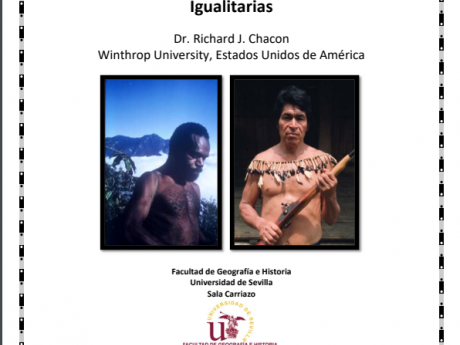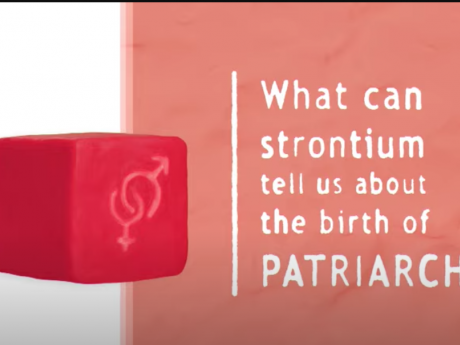Noticias |
Spain’s Copper Age Priestesses. An Archaeology Magazine Slideshow
Archaeology, the magazine of the Archaeological Institute of America (USA), re-launches its website with a new slideshow of our recent discoveries at the Valencina Copper Age mega-site. https://archaeology.org/issues/may-june-2024/#spain-copper-age-priestesses
LiDAR para revolucionar la Arqueología
El Grupo de Investigación ATLAS, de la Universidad de Sevilla, ha desarrollado diversos estudios de la Prehistoria Reciente con la tecnología LiDAR (Light Detection and Ranging) y materiales del Instituto Geográfico Nacional. El programa de televisión y de divulgación TESIS presentó algunos avances en su nueva edición. https://www.canalsur.es/television/programas/tesis/noticia/2055078.html
Landscape Archaeology Conference
Francisco Sánchez D. and José Ruiz F., members of the ATLAS research group, have presented the conference “Five Millennia of large Stones for the dead ” , and scientific poster “Space, time, territory and landscape in the iberian megasites of 3º millennium”, during the Landscape Archaeology Conference, in Madrid, Spain.
Investigación: Acústica en los dólmenes de Valencina
Los investigadores Miguel Galindo y Leonardo García Sanjuán se encuentran desarrollando un nuevo estudio de las posibles condiciones acústicas en yacimientos prehistóricos. El estudio, en los Dólmenes de Valencina, pretende investigar la función de su comportamiento temporal y frecuencial de los megalitos de La Pastora y Matarrubilla.
Estancia AUIP: Universidad de Buenos Aires (UBA)
Durante los meses de mayo y junio 2024, el investigador Bernardo Cornejo Maltz, de la Universidad de Buenos Aires, Argentina, obtuvo una beca de investigación de la Asociación de Universidades Iberoamericanas Públicas (AUIP), con la colaboración entre el departamento de Antropología Social y el Grupo de investigación ATLAS de la Universidad de Sevilla (US). El investigador Cornejo Maltz ha colaborado en las tareas de investigación...
Maritime Encounters Survey -MES- 2024
By a team from the universities of Seville and Göteborg, directed by profs. Mark A. Hunt Ortiz and Johan Ling, and within the framework of the Maritime Encounters project , from April 22 to May 17, 2024, a selective Archaeo-Metallurgical survey has been carried out in the NE of the province of Córdoba, NW of the province of Jaén and S of the province of...
Conferencia:Los Achuar de la Amazonia y los Dani de Papúa Nueva Guinea
El próximo día 28 de mayo de 2024, a las 19:00, el profesor Rick Chacon, de la Universidad de Winthrop (EEUU) presentará la conferencia "Los Achuar de la Amazonia y los Dani de Papúa Nueva Guinea. Dos ejemplos de Adquisición de Estatus y Acción Colectiva en sociedades igualitarias" Sala Carriazo de la Facultad de Geografía e Historia de la Universidad de Sevilla
WESIPS Conference
WESIPS 2024 (Warfare, Environment, Social Inequality, and Pro-Sociability Biennial Conference) will be held in Seville from June 4 to 7, 2024. You can consult the program here
Beautiful, Magic, Lethal: a Social Perspective of Cinnabar Use and Mercury Exposure at the Valencina Copper Age Mega-site (Spain)
Today, mercury is a matter of concern for health and environmental authorities across western countries, and legislation has been passed and programs have been implemented for its total elimination from human activity. But this was not always the case: mercury and its compounds have been highly appreciated and used since remote times all over the world with very diverse purposes ranging from decorative, medicinal, metallurgical...
Nuevas inscripciones funerarias romanas de Gades, Cádiz
El número 10 (julio 2023) del "Boletín Archivo Epigráfico", ha publicado el trabajo: "Nuevas inscripciones funerarias romanas de Gades", Cádiz, donde funge como coautor Jacobo Vázquez Páez del grupo ATLAS (HUM694). Se trata de los primeros resultados del repertorio de 43 nuevos epígrafes hallados en las excavaciones, específicamente en la zona de necrópolis púnica y romana.
Seminario Internacional: Códices del centro de México
Organizamos el seminario impartido por el investigador mexicano David Charles Wright Carr de la Universidad de Guanajuato e investigador de la Cátedra UNESCO Legislación, Sociedad y Patrimonio de México. Objetivos: Llevar a cabo discusiones sobre los enfoques teóricos actuales para el análisis y la interpretación de los manuscritos pictóricos de la Mesoamérica prehispánica y novohispana. Ofrecer a los estudiantes/profesores nuevos paradigmas en este campo desde un especialista....
Project Eggxotic and vital. The role of ostrich eggs in the definition of religious identity in the Phoenician-Punic Iberian
The Gerda Henkel Foundation has funded with 24,750 euros the project entitled Eggxotic and vital. The role of ostrich eggs in the definition of religious identity in the Phoenician-Punic Iberian Peninsula: reinterpreting the Villaricos necropolis (Almeria, Spain). It will be led by Miriam Luciañez-Triviño (Distinguished Researcher and member of the Atlas Research Group, HUM-694) and Violeta Moreno Megías (Assistant Professor and member of the Research...
Excavations at Las Capellanías (Cañaveral de León, Huelva)
Excavations have resumed at the archaeological site of Las Capellanías (Cañaveral de León, Huelva), discovered in June 2022. The September 2023 excavation season is coordinated by Timoteo Rivera Jiménez (University of Huelva), Marta Díaz-Guardamino Uribe (University of Durham), David Wheatley (University of Southampton) and Leonardo García Sanjuán (University of Seville). The excavations undertaken this year are aimed at providing contextual evidence to understand the social...
The Ivory Lady and Her Heiresses. A BBC Report
For years, researchers believed that a treasure-packed tomb outside Seville dating back to around 2,850 BC belonged to a young man between 17 and 25 years old. Now the analysis of sexually dimorphic amelogenin peptides in tooth enamel has revealed that the the most socially prominent individual in ancient Iberian copper age society was not who we previously thought they were. Video by Next Stop...
What can strontium tell us about the birth of patriarchy? Make the connection, with EU-science (Womam Project)
Make the connection with EU-science’ is a series of explanatory videos focusing on the scientific content and exploitation aspects of EU research projects. In this particular video, we look at how the WOMAM project dug into the roots of patriarchy by examining traces of strontium isotopes in ancient bones. You can watch the video: https://www.youtube.com/watch?v=tmvu_8r3Qv8
Ivory technology: tools, techniques and production modes in the Iberian Copper Age. Valencina de la Concepción (Seville) as a case study
The use of ivory in the Mediterranean dates back to the Paleolithic, and it had a significant impact during the Copper Age in southern Europe. This article examines the ways in which elephant tusks were used and the process of producing ivory objects during the Copper Age in the Iberian Peninsula. Valencina's mega-site in southern Spain is used as a study sample because of its abundant...















